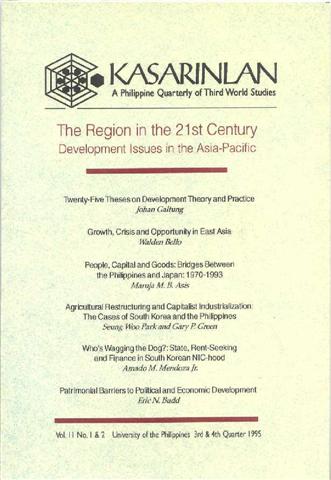People, Capital and Goods: Bridges Between the Philippines and Japan, 1970-1993
Abstract
The flow of people between the Philippines and Japan, could be understood in relation to other types of exchanges, namely, the movement of capital and goods. Until the 1970s, there was not much exchange in terms of people and trade between the two countries. The flow of Japanese ODA to the Philippines in the 1970s started the exchange of people—Filipino trainees coming to Japan and the dispatch of Japanese experts and volunteers to the Philippines. The flow of Japanese capital through investments into the Philippines over the years also involved some population mobility similar to the mobility stimulated by development assistance. In the last two decades, the flow of people between the two countries accelerated. While majority of Japanese visitors to the country are tourists, Filipinos in Japan are predominantly workers. Labor migration, particularly the migration of the relatively unskilled has engendered problems to both sending and receiving countries. Although there has been some tentative discussions to consider the implications of development assistance, investment and trade on population mobility, alternatives arising from these have yet to be translated into policies for generating stay-at-home development. These alternatives to labor migration need to focus on generating domestic employment in sending countries. Otherwise, they may be simply contributing to a jobless economic growth which is not sustainable in the long run.
How to Cite
ASIS, Maruja M. B..
People, Capital and Goods: Bridges Between the Philippines and Japan, 1970-1993.
Kasarinlan: Philippine Journal of Third World Studies, [S.l.], v. 11, n. 1, june 2007.
ISSN 2012-080X.
Available at: <https://journals.upd.edu.ph/index.php/kasarinlan/article/view/1626>. Date accessed: 24 aug. 2025.
Section
Features
Keywords
Philippines, Japan, 1970-1993, Overseas Development Assistance
By submitting a manuscript, the authors agree that the exclusive rights to reproduce and distribute the article have been given to the Third World Studies Center.



